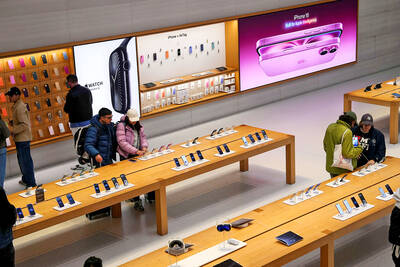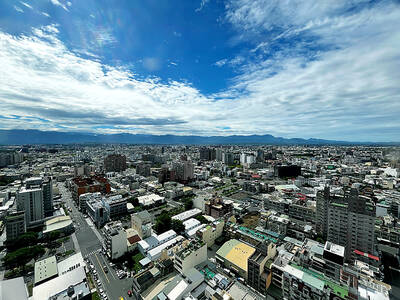Demand for Murata Manufacturing Co’s lithium-ion batteries is so strong the Japanese firm cannot make enough of them for its own use. However, inflated freight costs mean the business is likely to record a loss this year, yet another victim of the ongoing supply chain chaos.
The battery unit is unlikely to report a profit this fiscal year, after Murata resorted to transporting its products by air, president Norio Nakajima said in an interview.
The company had previously pledged to turn the division around by March, ending a string of losses since it bought the business from Sony Group Corp in 2017.
Still, Murata is seeing rapid growth and plans to accelerate investment to beef up production capacity, Nakajima said.
“It might still be possible that our battery business posts a profit this term, but I believe I will probably need to apologize for a loss,” Nakajima said. “We are being forced to use airfreight to deliver our batteries because ships are unavailable, and that costs an outrageous amount of money. If we were able to use sea routes, we should be able to make a profit.”
On top of inflated base cargo fees fueled by high demand, batteries shipped via air incur extra handling charges because they are a fire hazard. The Kyoto-based component maker’s transportation woes are yet another sign that the global supply crunch affecting holiday deliveries is not likely to ease any time soon.
The emergence of the Omicron variant of SARS-CoV-2 might push up container rates further next year if the mutation triggers Chinese port closures like those this year, Bloomberg Intelligence analyst James Teo said.
Despite the likely loss, Nakajima said the company is optimistic about the outlook for the batteries business and plans to step up investments to boost production.
Murata plans to spend more than ¥640 billion (US$5.63 billion) to increase total output during the three-year period from April next year, with the battery unit set to receive the second-largest share after the company’s flagship multilayer ceramic capacitor products, he said.
“The speed of the transition to battery-equipped vacuum cleaners, tools and garden equipment from conventional power sources has been much faster than what we had anticipated,” he said.
Murata posted record operating profit of ¥313.2 billion in the previous fiscal year and forecasts higher earnings in the current term, thanks to robust demand from cars and smartphones.
Tight supply of components, especially for cars, is likely to persist next year, as the wafer output would not increase, and ships and aircraft should remain busy, Nakajima said.
“Car companies are working on decreasing the number of chips required per vehicle, but that will take some time,” he said. “What they can do for now is just place orders ahead of time, and given the supply of wafers isn’t changing much, I don’t think that would lead to drastic improvement of the ongoing situation.”

BYPASSING CHINA TARIFFS: In the first five months of this year, Foxconn sent US$4.4bn of iPhones to the US from India, compared with US$3.7bn in the whole of last year Nearly all the iPhones exported by Foxconn Technology Group (富士康科技集團) from India went to the US between March and last month, customs data showed, far above last year’s average of 50 percent and a clear sign of Apple Inc’s efforts to bypass high US tariffs imposed on China. The numbers, being reported by Reuters for the first time, show that Apple has realigned its India exports to almost exclusively serve the US market, when previously the devices were more widely distributed to nations including the Netherlands and the Czech Republic. During March to last month, Foxconn, known as Hon Hai Precision Industry

Taiwan Semiconductor Manufacturing Co (TSMC, 台積電) and the University of Tokyo (UTokyo) yesterday announced the launch of the TSMC-UTokyo Lab to promote advanced semiconductor research, education and talent development. The lab is TSMC’s first laboratory collaboration with a university outside Taiwan, the company said in a statement. The lab would leverage “the extensive knowledge, experience, and creativity” of both institutions, the company said. It is located in the Asano Section of UTokyo’s Hongo, Tokyo, campus and would be managed by UTokyo faculty, guided by directors from UTokyo and TSMC, the company said. TSMC began working with UTokyo in 2019, resulting in 21 research projects,

Taiwan’s property market is entering a freeze, with mortgage activity across the nation’s six largest cities plummeting in the first quarter, H&B Realty Co (住商不動產) said yesterday, citing mounting pressure on housing demand amid tighter lending rules and regulatory curbs. Mortgage applications in Taipei, New Taipei City, Taoyuan, Taichung, Tainan and Kaohsiung totaled 28,078 from January to March, a sharp 36.3 percent decline from 44,082 in the same period last year, the nation’s largest real-estate brokerage by franchise said, citing data from the Joint Credit Information Center (JCIC, 聯徵中心). “The simultaneous decline across all six cities reflects just how drastically the market

Ashton Hall’s morning routine involves dunking his head in iced Saratoga Spring Water. For the company that sells the bottled water — Hall’s brand of choice for drinking, brushing his teeth and submerging himself — that is fantastic news. “We’re so thankful to this incredible fitness influencer called Ashton Hall,” Saratoga owner Primo Brands Corp’s CEO Robbert Rietbroek said on an earnings call after Hall’s morning routine video went viral. “He really helped put our brand on the map.” Primo Brands, which was not affiliated with Hall when he made his video, is among the increasing number of companies benefiting from influencer